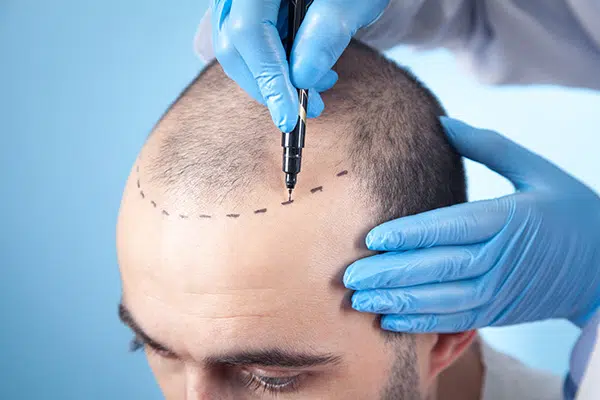Procedures
There are two types of commonly performed facelift operations: SMAS lifting and deep-plane facelifts. Like everything, there are pros and cons to each of these procedures. In general, SMAS lifts, which work by lifting the tendinous sheet called the SMAS (which runs throughout the face and neck) to re-suspend drooping tissues: jowls, sagging skin, and loose neck tissue. SMAS lifts are more commonly offered in the United States because they are safer, have less downtime, and offer a refreshed appearance without that “wind-swept” facelift appearance that most people find unsettling.
There are two types of commonly performed facelift operations: SMAS lifting and deep-plane facelifts. Like everything, there are pros and cons to each of these procedures. In general, SMAS lifts, which work by lifting the tendinous sheet called the SMAS (which runs throughout the face and neck) to re-suspend drooping tissues: jowls, sagging skin, and loose neck tissue. SMAS lifts are more commonly offered in the United States because they are safer, have less downtime, and offer a refreshed appearance without that “wind-swept” facelift appearance that most people find unsettling.
There are two types of commonly performed facelift operations: SMAS lifting and deep-plane facelifts. Like everything, there are pros and cons to each of these procedures. In general, SMAS lifts, which work by lifting the tendinous sheet called the SMAS (which runs throughout the face and neck) to re-suspend drooping tissues: jowls, sagging skin, and loose neck tissue. SMAS lifts are more commonly offered in the United States because they are safer, have less downtime, and offer a refreshed appearance without that “wind-swept” facelift appearance that most people find unsettling.
There are two types of commonly performed facelift operations: SMAS lifting and deep-plane facelifts. Like everything, there are pros and cons to each of these procedures. In general, SMAS lifts, which work by lifting the tendinous sheet called the SMAS (which runs throughout the face and neck) to re-suspend drooping tissues: jowls, sagging skin, and loose neck tissue. SMAS lifts are more commonly offered in the United States because they are safer, have less downtime, and offer a refreshed appearance without that “wind-swept” facelift appearance that most people find unsettling.
There are two types of commonly performed facelift operations: SMAS lifting and deep-plane facelifts. Like everything, there are pros and cons to each of these procedures. In general, SMAS lifts, which work by lifting the tendinous sheet called the SMAS (which runs throughout the face and neck) to re-suspend drooping tissues: jowls, sagging skin, and loose neck tissue. SMAS lifts are more commonly offered in the United States because they are safer, have less downtime, and offer a refreshed appearance without that “wind-swept” facelift appearance that most people find unsettling.
There are two types of commonly performed facelift operations: SMAS lifting and deep-plane facelifts. Like everything, there are pros and cons to each of these procedures. In general, SMAS lifts, which work by lifting the tendinous sheet called the SMAS (which runs throughout the face and neck) to re-suspend drooping tissues: jowls, sagging skin, and loose neck tissue. SMAS lifts are more commonly offered in the United States because they are safer, have less downtime, and offer a refreshed appearance without that “wind-swept” facelift appearance that most people find unsettling.
There are two types of commonly performed facelift operations: SMAS lifting and deep-plane facelifts. Like everything, there are pros and cons to each of these procedures. In general, SMAS lifts, which work by lifting the tendinous sheet called the SMAS (which runs throughout the face and neck) to re-suspend drooping tissues: jowls, sagging skin, and loose neck tissue. SMAS lifts are more commonly offered in the United States because they are safer, have less downtime, and offer a refreshed appearance without that “wind-swept” facelift appearance that most people find unsettling.
There are two types of commonly performed facelift operations: SMAS lifting and deep-plane facelifts. Like everything, there are pros and cons to each of these procedures. In general, SMAS lifts, which work by lifting the tendinous sheet called the SMAS (which runs throughout the face and neck) to re-suspend drooping tissues: jowls, sagging skin, and loose neck tissue. SMAS lifts are more commonly offered in the United States because they are safer, have less downtime, and offer a refreshed appearance without that “wind-swept” facelift appearance that most people find unsettling.
There are two types of commonly performed facelift operations: SMAS lifting and deep-plane facelifts. Like everything, there are pros and cons to each of these procedures. In general, SMAS lifts, which work by lifting the tendinous sheet called the SMAS (which runs throughout the face and neck) to re-suspend drooping tissues: jowls, sagging skin, and loose neck tissue. SMAS lifts are more commonly offered in the United States because they are safer, have less downtime, and offer a refreshed appearance without that “wind-swept” facelift appearance that most people find unsettling.
There are two types of commonly performed facelift operations: SMAS lifting and deep-plane facelifts. Like everything, there are pros and cons to each of these procedures. In general, SMAS lifts, which work by lifting the tendinous sheet called the SMAS (which runs throughout the face and neck) to re-suspend drooping tissues: jowls, sagging skin, and loose neck tissue. SMAS lifts are more commonly offered in the United States because they are safer, have less downtime, and offer a refreshed appearance without that “wind-swept” facelift appearance that most people find unsettling.







